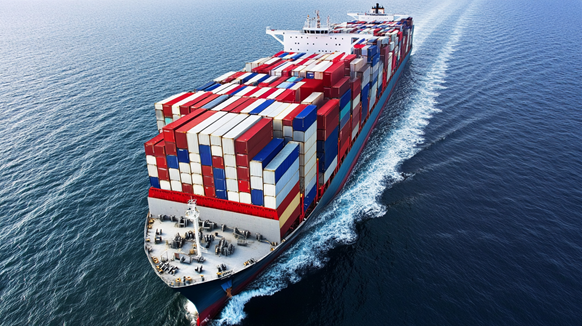Understanding Tariff Wars: How They Impact Markets and Your Money

Tariffs might sound like something that only matters to economists and politicians, but when countries start slapping extra fees on imported goods, it doesn’t just affect shipping containers and customs offices—it hits your wallet, your investments, and the bottom line of American businesses. Whether you're a trader watching earnings season or a consumer buying your morning latte, tariff wars impact all of us. And to bring this to life, let’s walk through how a well-known brand like Starbucks gets caught in the crossfire.
What Exactly Is a Tariff War?
A tariff is essentially a tax on imported goods. When one country raises tariffs, others usually retaliate with tariffs of their own. This back-and-forth battle—aka a tariff war—raises prices, disrupts supply chains, and creates economic uncertainty.
Politicians often claim tariffs are meant to protect domestic industries. But in practice, they often do more harm than good by increasing costs for both businesses and consumers.
The Real Impact on American Consumers
Let’s start where it hits hardest: your everyday purchases.
Tariffs raise the cost of imported goods. Whether it’s clothing, electronics, groceries, or your favorite cup of coffee, businesses that rely on foreign suppliers are forced to pay more—and those costs are almost always passed on to you, the customer.
If you're noticing higher prices on jeans, smartphones, or even your go-to Starbucks order... that’s not just inflation. It’s tariffs, too.
Starbucks and the Ripple Effect of Tariffs
You might think a company like Starbucks—an American icon—would be immune. Think again. Starbucks relies on a global supply chain to keep those lattes flowing.
- Coffee Beans: While Starbucks sources a lot of its coffee from Latin America and Africa (not always subject to tariffs), any shift in global trade policy can affect pricing. If the U.S. adds tariffs on farming equipment or fertilizer from countries like China, that raises costs for suppliers—which gets passed on to Starbucks.
- Packaging & Equipment: Many of the cups, lids, espresso machines, and even furniture inside your local Starbucks location are manufactured overseas. Tariffs on steel, aluminum, or machinery from countries like China and Germany? That directly raises Starbucks' operating expenses.
- Merchandise and Retail Goods: Mugs, tumblers, and branded gear sold in stores are often made in countries that could be hit by tariffs. Suddenly, that $22 tumbler now costs Starbucks more to produce, cutting into their margins.
And it doesn’t stop there. If the economy slows due to prolonged tariff wars, consumer spending drops, and fewer people swing by for their $6 coffee. Starbucks feels the pressure from both the cost and demand side.
What Happens to Corporate Earnings?
Now, zoom out to the broader market. Companies like Starbucks are part of the S&P 500—and when their costs rise while sales fall, earnings drop. That hits the stock price.
Here’s how the dominoes fall:
- Tariffs increase input costs (raw materials, equipment, etc.).
- Companies pass costs onto consumers, risking lower demand.
- Profit margins shrink, as companies can’t always raise prices fast enough.
- Earnings forecasts are lowered, and Wall Street responds.
- Stock prices dip, especially for companies in consumer discretionary, retail, or industrial sectors.
Investors start to get skittish. Volatility picks up. Traders adjust positions. Some sectors (like defense or agriculture) may benefit, but others get hammered.
How Should Investors Respond?
- Focus on Supply Chain Exposure: Companies that rely heavily on foreign manufacturing or international sales (like Starbucks, Apple, or Nike) will feel the pressure in a tariff war. Be cautious of their earnings outlook.
- Watch for Price Increases: Pay attention to how companies respond—those that can pass costs onto consumers without hurting sales might weather the storm better than others.
- Seek Defensive Plays: Companies in sectors like utilities, healthcare, and consumer staples tend to be more resilient during economic slowdowns.
- Diversify Globally: While the U.S. might be in a tariff standoff, other economies might benefit. Consider adding international exposure to hedge geopolitical risk.
- Stay Nimble: Volatility creates opportunity. Traders can look for short-term swings tied to trade headlines, while long-term investors should focus on fundamentals and avoid panic.
The Bottom Line
Tariff wars don’t just affect headlines and politicians—they touch everything from your morning coffee to your investment portfolio. Companies like Starbucks are great examples of how global trade policy filters down into everyday American life, whether it’s through higher prices, tighter margins, or lower stock returns.
As an investor, the key is to stay informed and agile. Understand how companies are positioned, keep an eye on earnings trends, and use volatility to your advantage. Remember, in a world of economic uncertainty, your greatest asset isn’t just capital—it’s clarity.
And if you're more of an active trader? Don’t forget: falling prices also mean opportunity. If the tariff war drags on—and especially if tensions escalate with key trading partners like China—stocks in the crosshairs could see steep declines. Companies with heavy exposure to foreign manufacturing or global supply chains are especially vulnerable. That creates potential for traders who know how to short the market, use inverse ETFs, or play bearish setups. In a storm, you can either take cover—or learn how to trade the waves.